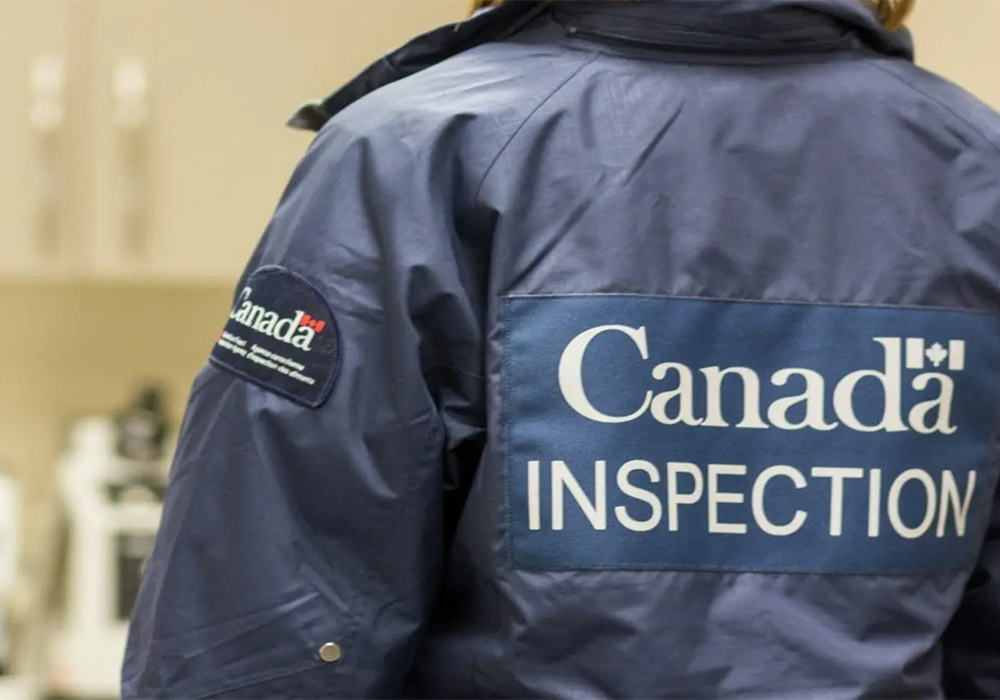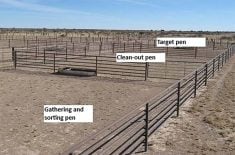Canada has a rigid meat inspection system to ensure that commercially sold food is safe for public consumption. A key component of this system is to prevent unhealthy animals from being sold for food.
There is an entire system of slaughter facility inspection and food safety protocols that I won’t have space to touch on here. But the part of inspection that pertains specifically to animal health and welfare is an important and interesting aspect of this larger system.
The Canadian Food Inspection Agency oversees federally inspected slaughter facilities to enforce federal regulations regarding animal welfare, health and humane slaughter. Canadian beef that is sold outside a province or exported out of the country must be processed at federally inspected facilities. People must handle animals humanely before and during slaughter. Finally, animals must be specifically identified to allow traceability.
Read Also

Beef cattle more prone to trace mineral deficiencies
The trace mineral status of our cows and calves is a significant challenge for western Canadian producers and veterinarians.
Inspectors and veterinarians who work for the CFIA observe animals alive to identify signs of illness or disease. They also verify the identity of animals and ensure humane handling and slaughter.
The CFIA also tests and samples carcasses for bacterial contamination such as E. coli and chemical hazards such as drug residues. There are also provincial-level inspection processes, which vary by province.
Inspectors examine live animals arriving at a slaughter facility in the first phase of inspection. Animals are assessed for obvious illness including neurological signs that could indicate disease of the brain and spinal cord. They are also checked for evidence of improper transportation or handling.
The next phase is examination of the slaughtered carcass and internal organs to pick up abnormalities that may indicate disease.
Systemic illness is a reason for the entire carcass to be deemed unfit for food and is therefore condemned and taken for disposal.
In instances of localized disease, usually only the diseased region of the carcass is condemned and removed. This approach attempts to strike a balance between risk to food safety and not wasting an animal.
Condemnation and disposal of an entire carcass can occur for a number of disease processes including those of the brain and spinal cord (rabies, BSE, listeriosis). Carcass condemnation can also occur with diseases that affect the whole body. For example, animals with anemia, which can arise from a number of systemic illnesses, are usually condemned.
Anemic animals may have fever, muscle weakness, pale mucous membranes, poor muscle condition and possibly difficulty breathing when examined alive. At slaughter, these animals have pale organs and muscles, abnormal blood clotting, enlarged spleen and may also be in poor condition.
A beef steer with mild pneumonia is an example where localized disease in a particular area of the body is handled differently. Cases of mild pneumonia may not be detected during live inspection; severe cases experience difficulty breathing, fever, listlessness and emaciation.
When slaughtered, the mild pneumonia will be evident by visible changes in the lung tissues and associated draining lymph nodes. If there are no signs of systemic illness related to the pneumonia (emaciation, spread of infection to other organs), then the carcass is not condemned. The affected lung tissue and possibly rib cage are removed. The rest of the meat will be processed normally.
Meat inspection also serves a role in national disease surveillance. An example of this system working is the rare detection of bovine tuberculosis. According to the CFIA, 95 percent of all commercial cattle in Canada are slaughtered at federally inspected facilities. Because most cattle are processed through these systems, it forms the basis of the national surveillance system to detect cases. Inspectors carefully check lymph nodes of slaughtered cattle for classical TB lesions. If these are detected, samples are sent for confirmatory laboratory testing.
Recent cases of TB in Canadian cattle were detected through this federal inspection system including the 2016 herd in Alberta and 2018 herd from the British Columbia Interior. In both cases, culled animals were shipped for slaughter where TB lesions were detected. Finding cases such as these are critical for Canada’s overall disease surveillance activities to ensure access to international markets and confidence in our food safety.















